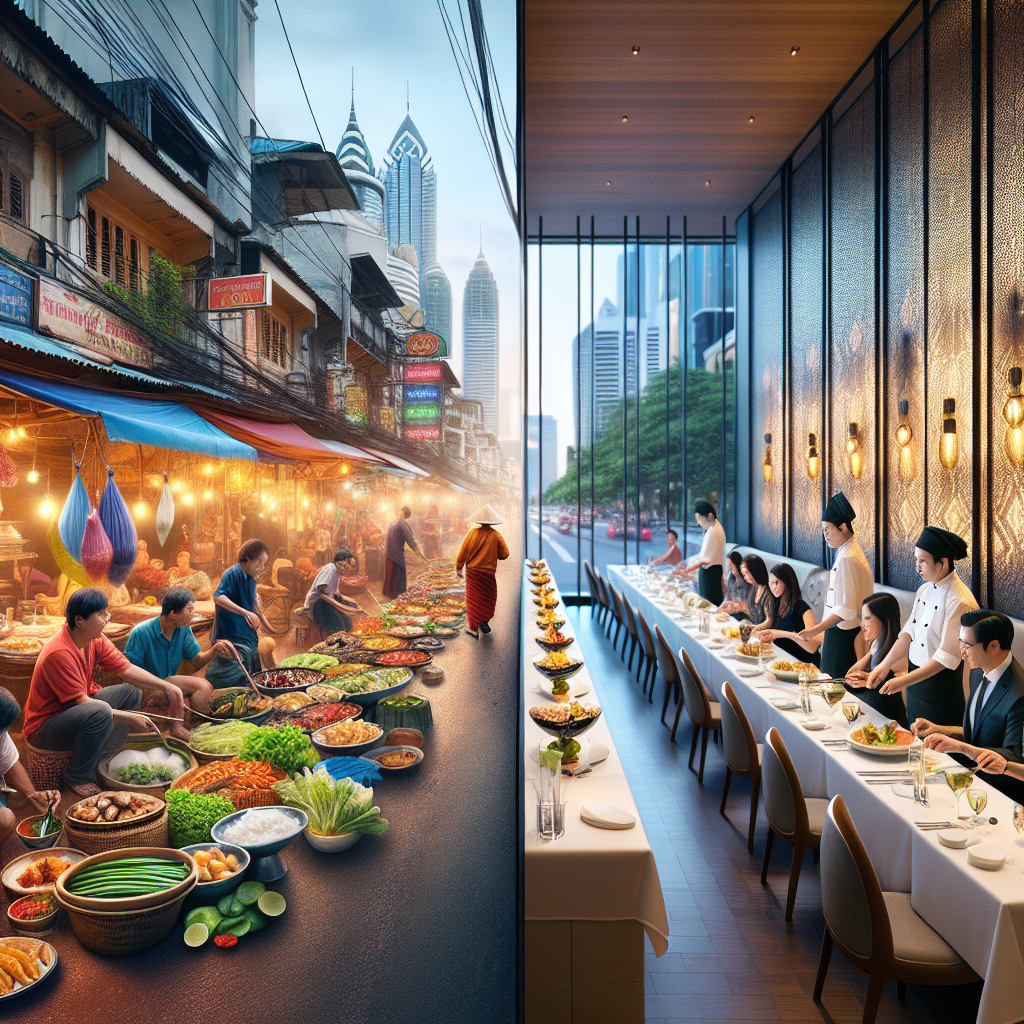Southeast Asia is a vibrant tapestry of cultures, traditions, and flavors, where culinary experiences range from bustling street food stalls to high-end fine dining establishments. The region’s rich heritage has produced a diverse array of dishes that reflect its history, geography, and the unique fusion of indigenous and foreign influences. This article explores the culinary treasures of Southeast Asia, showcasing the evolution from street fare to gourmet cuisine.
The Street Food Revolution
Street food is the heartbeat of Southeast Asian culinary culture. It captures the essence of local communities and offers an authentic taste of everyday life. Whether it’s the sizzling skewers of satay in Indonesia or the fragrant pho in Vietnam, street food provides a window into the region’s culinary diversity.
Thailand
In Thailand, street vendors serve an abundance of dishes that are both flavorful and affordable. Pad Thai, a stir-fried noodle dish with shrimp, tofu, or chicken, is a global favorite. However, it’s the lesser-known dishes like som tam (green papaya salad) and boat noodles that showcase the balance of sweet, sour, salty, and spicy flavors that Thai cuisine is renowned for.
Vietnam
Vietnam’s street food scene is equally rich. Pho, a noodle soup typically made with beef or chicken, garnished with herbs and lime, has captured hearts worldwide. But locals often prefer bun cha, grilled pork served with vermicelli noodles, or banh mi, a French-inspired baguette sandwich that highlights the country’s colonial past.
Malaysia and Singapore
In Malaysia and Singapore, the street food scene showcases the multicultural society with offerings like kaya toast, char kway teow (stir-fried flat noodles), and laksa (spicy noodle soup). The vibrant hawker centers, where vendors sell a variety of regional dishes, and allow customers to sample an array of flavors in one sitting.
The Rise of Fine Dining
As Southeast Asia’s culinary reputation has grown globally, so has the emergence of fine dining. Chefs are taking traditional dishes and elevating them to new heights, blending local ingredients with international culinary techniques.
Innovative Concepts
Restaurants are now focusing on farm-to-table concepts, emphasizing sustainability and local sourcing. Chefs like David Thompson in Bangkok and Will Meyrick in Bali are known for their reinterpretations of traditional dishes, combining innovation with authenticity.
Fine Dining and Cultural Heritage
In cities like Singapore and Kuala Lumpur, fine dining establishments are also embracing the concept of heritage cuisine. These restaurants not only serve exquisite dishes but also create an experience that reflects the history and culture of the region. Enjoying a degustation menu featuring traditional flavors reimagined in a contemporary setting allows diners to savor the depth of Southeast Asian culinary traditions.
Notable Restaurants
Some notable restaurants have gained international acclaim for their contributions to fine dining. In Bangkok, Nahm, which has consistently been ranked among the best in Asia, merges Thai ingredients with modern techniques. Similarly, Odette in Singapore showcases a blend of Asian and French influences, earning a Michelin star for its imaginative dishes.
Culinary Events and Festivals
Experience the fusion of street food and fine dining at various culinary events and festivals throughout Southeast Asia. Events like the Bangkok Street Food Festival and the Singapore Food Festival celebrate local flavors, presenting them in innovative formats that attract both locals and tourists.
Cooking Classes and Food Tours
Food tours and cooking classes are becoming increasingly popular. They allow visitors to immerse themselves in local culinary traditions, providing hands-on experiences that range from street food sampling to gourmet cooking lessons with celebrated chefs.
The Future of Southeast Asian Cuisine
As the world continues to embrace diversity, the culinary landscape of Southeast Asia will undoubtedly evolve. The fusion of traditional techniques and modern influences promises a dynamic future for this region’s cuisine.
Whether one seeks the authenticity of street food or the sophistication of fine dining, the culinary treasures of Southeast Asia offer an incredible journey through flavors and cultures. Bridging the gap between everyday meals and gastronomic masterpieces, this region stands as a testament to the power of food as a universal language and art form.
In conclusion, exploring the culinary landscape of Southeast Asia is not just about taste but understanding the rich cultural narratives that each dish represents, making it an unforgettable adventure for every food lover.

